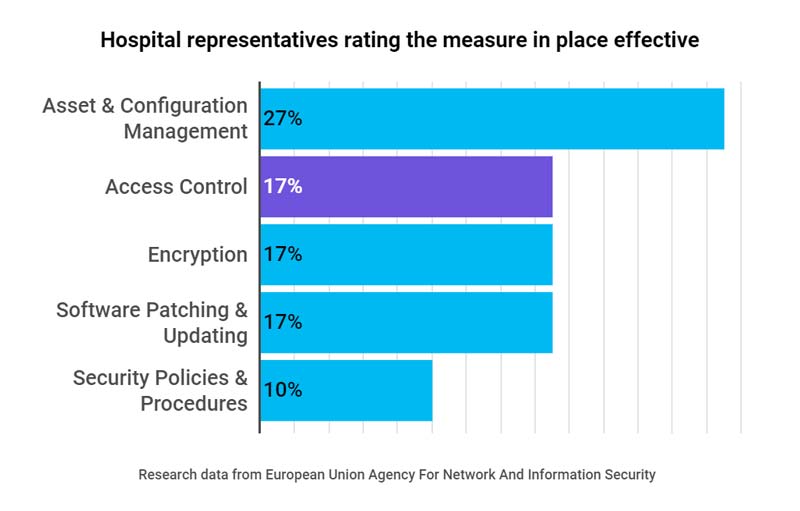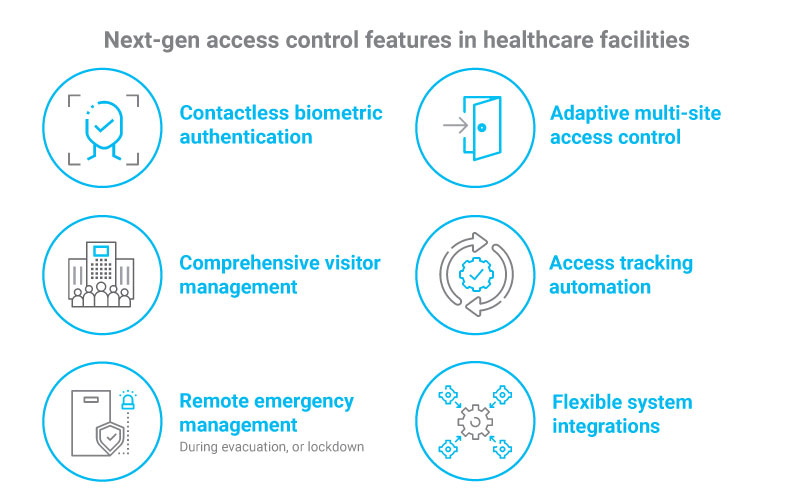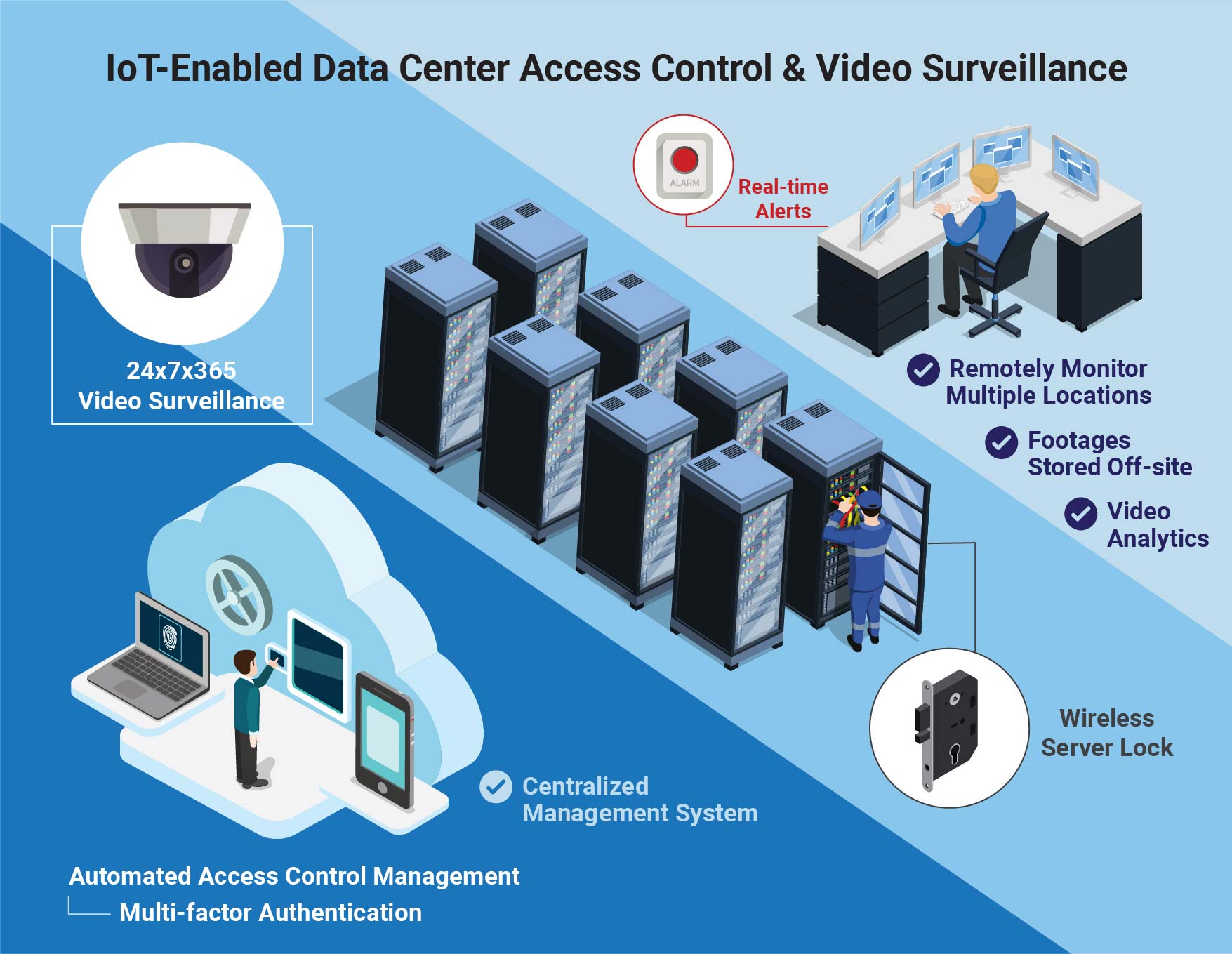ScanViS
Access Control Solutions for Laboratory Facilities
- Details
- Written by Ricky Tsui
- Category: Blog
- Hits: 6352
In terms of the amount of sensitive data laboratory facilities work with, physical security is crucial to protect the data and assets, specialized security staff training, clear policies and procedures, and installation of functional access control equipment must meet the needs of scientists, specialists and laboratory staff to ensure a safe and secure working environment.
However, some aspects of laboratory security are more flexible than others, and this is where most mistakes are made. For instance, in order to give as much attention to protecting sensitive personal data, laboratories fail on giving due attention to physical security, such as electronic testing equipment, dangerous samples and chemicals, or visitor access control levels. Therefore, security systems at laboratory facilities must take physical security as a priority.
Some laboratories still rely heavily on manual security checks by staff, placing a lot into the hands of the security team members, while implementing physical barriers to the outside world that are placed on multiple touchpoints. For instance, the receptionist checks the visitor’s ID and buzzes him/her in manually. Visitor’s data must be entered into a computer log manually. In addition, physical barriers may be connected to standalone access control units distributed across the laboratory and not provide the option to monitor them simultaneously. However, these options are increasingly fading into the past as laboratory security systems now rely on advanced electronic access control solutions, for examples,
Biometric access control
Certain laboratory sections must adhere to strict access control rules. For instance, medical research labs or testing rooms deal with highly sensitive values, and people allowed to get in must be clearly identified. Therefore, hospitals deploy biometrics like facial recognition or iris readers to allow entry into the restricted area.
Wireless cabinet lock
Real-time access control and monitoring to laboratory cabinets is crucial to protect sensitive data and assets. Wireless cabinet lock can work with existing or new access control system using standard RFID protocols namely iCLASS®, MIFARE® and DESFire. Some can even connect to access control solution adopting facial recognition as authentication method.
Keypad readers with passcodes
This security option enables entry by typing a pin into a reader. Readers can be standalone or integrated into an access control system. This authentication method can combine with facial recognition to make multi-factor or two-factor authentication.
Check here to know more about
MWC21 Show Daily Interview: How ScanViS Works
- Details
- Written by Ken Li
- Category: Blog
- Hits: 1818
As MWC21 prepares to make a comeback following the start of the Covid-19 pandemic, implementing healthy, hygienic measures has never been so important. Here, Ken Li, Senior Solutions Manager – New Solution, Comba Telecom, outlines how touchless and face-ID technology can play a crucial role in creating a safe environment for attendees.
Can you explain how ScanViS’s touchless access control feature will ensure a healthy and hygienic experience for attendees at MWC21?
ScanViS GateGuard PRO access control devices leverage best-in-class facial recognition technology to verify the face ID of the registered attendees to walk across the venues of MWC21, without touching any machines to complete the access control process. The registered attendees simply walk through the BREEZ access control area where the GateGuard PRO access control devices will verify their face ID and authorize entry to them. The whole verification process is completed by the ScanViS devices and is totally touch-free to avoid unnecessary physical contacts between humans and machines, which significantly mitigates the risk of cross-infection and secures a healthy and hygienic experience for the attendees.
How important are touchless features in creating a safe environment with in-person events making a comeback?
Touchless feature is a preventive step to control cross-infection in in-person events. It adopts biometric technology such as facial recognition using the face as an access key to enter the event venues. Physical contacts between human and human, human and machines in the access control process can be eliminated to secure a safe environment for public events.
How has Comba-Telecom adapted its solutions in light of the Covid-19 pandemic?
Comba Telecom’s smart solution brand – ScanViS GateGuard series, adopts safe and reliable facial recognition technology to perform access control functions by face ID. The product series help enterprises and organizations to ensure only registered visitors have authorized entry to the building or venue, while the touchless feature healthy and safe measures in the building or facility management industry.
What are some of the challenges of operating such solutions in the middle of a health crisis and how have you overcome them?
It may not be easy for the public or building/venue to fully accept the adoption of the new solutions when a health crisis hits suddenly. Since the pandemic started, ScanViS has been communicating to the public and communities the importance of using touchless in building/venue access and explaining the benefits brought by such solutions through the online platforms. Demonstration videos to show easy installation and operation of the solutions also help increase the acceptance level of wide adoption in the post-pandemic era.
Another challenge is the privacy issue when using facial recognition as a touchless feature in the solutions. ScanViS understands the importance of data security therefore all collected data will be kept only by the customer with high standard encryption. In in-person events, consent will need to obtain from the attendees to use the face ID in the event access control system.
What are the advantages of using face verification tools as more people begin to gather in public places?
Fast. Accurate. Convenient. Efficient.
Face verification tools are able to process a large volume of face data in public places with high traffic of people. It takes less than 0.3 seconds to verify the registered visitor’s face. Some devices can verify multiple faces with less than 1 second in one scene. This can significantly shorten queuing time in the access control area and facilitate crowd management with enhanced security.
Published in MWC21 Official Newspaper
Learn more about ScanViS MWC21 BREEZ deployment
Next-gen Access Control in Healthcare Facilities
- Details
- Written by ScanViS Team
- Category: Blog
- Hits: 2876
The COVID-19 situation is putting immense pressure on the healthcare sector and requires hospital authorities to prepare for the “next normal”. With high traffic of people, complex staffing, medical equipment and sensitive medical data, hospitals face increased security threats.
To ensure physical safety and information security, both organizational and technical measures can be adopted. An EU research showed that 17% of hospital representatives considered “Access Control” as an effective step to protect patients, visitors, and staff.[1] Access control is a key security element in hospitals to avoid unauthorized access to restricted and sensitive areas.

Today’s access control solutions can integrate with more systems within the healthcare sector, including human resources, payroll, contractor verification, etc. Leveraging access control technology with multiple systems can achieve incremental benefits by enhancing efficiencies and saving investment costs.
With changing security and operation needs, a next-gen access control solution enables hospitals to upgrade their systems with these features:
- Contactless biometric authentication
- Adaptive multi-site access control
- Comprehensive visitor management
- Access tracking automation
- Remote emergency management during lockdown
- Flexible system integrations

Reinforcing physical security
In healthcare facilities, a dynamic and diverse workforce requires a robust access control solution that would encourage productivity and enhance security. With pre-defined user groups, the system ensures only authorized personnel can gain access to specific areas in hospitals. For instance, medical staff is authorized to access the pharmacy while security managers have access to the control room. Comprehensive visitor management enables hospitals to effectively track who has entered the ward, check if their visit is authorized, and deny entry if necessary.
In the post-pandemic world, access control solutions could help prevent the spread of disease by effectively separating infected patients from non-infected patients.
Protecting patient data
Security measures must be taken to protect personal health information from unauthorized access. It is important to ensure only authorized personnel can grant access to information on a need-to-know basis. Multi-factor authentication can be an extra layer of security for accessing sensitive data adds.
Especially for hospital server rooms and document management systems, the installation of smart cabinet locks can extend the physical security to rack-level. When effectively implemented, access control solutions block intruders from physically accessing confidential medical data.
Improving front-line clinician workflow
In a hospital and clinic environment, immediate access to medical rooms or devices can be critical. To restrict access points without compromising workflow speed, the authentication process must be efficient and accurate. Access control equipped with contactless identification can facilitate entry control for clinicians with ease.
Boosting operational efficiency with system integrations
The greatest benefits of access control systems can be achieved when integrated with other management systems. For example, automatically populate access data across the healthcare facility’s multiple systems like HR, time and attendance, and directory systems. In this way, only one point of data entry would be required for every new staff or contractor.
Access control technology is more adaptable and accessible for healthcare facilities nowadays, it is proved to be a crucial part of any comprehensive solution to ensure security and efficiency.
Reference:
[1] Cyber security and resilience for Smart Hospitals
Key elements of IoT-enabled physical access control solutions for data center security
- Details
- Written by ScanViS Team
- Category: Blog
- Hits: 4143
Across every industry, businesses are recognizing the efficiencies brought by the Internet of Things (IoT) solutions to improve industrial operations through real-time tracking of machinery, equipment, and employees. What about data centers?
Regarding unauthorized access and other physical threats, integrating data center infrastructure with IoT-enabled security solutions is an efficient option to keep data assets safer with ease. While Data Center Infrastructure Management (DCIM) software adds an extra layer of security, access control management and video surveillance are the keys.

Making it a complete physical security solution for rack level access control in data centers, some hardware and software elements are necessary for an upgrade on the existing infrastructure.
On-premises IoT-enabled security devices:
- Wireless smart server locks
- Thermal IP cameras
- Multi-factor authentication devices with biometric technology
Access control flow:
- User check-in with multi-factor authentication (biometrics, RFID cards, pins, etc.)
- Personnel data verified by cloud central management system
- User ID verified and access authorized to the designated rack
- User to open the wireless rack lock
Solution features for security management:
- Fully configurable user groups and access zones
- Automated access control system
- Intelligent video surveillance with real-time alerts and remote view
- Video analytics and insights
Key Benefits
- Scalable rack level access management
- Real-time alerts on the malicious physical attack from intruders
- Automated access logs management
- Remote access permission
- Centralized visitor management
- Seamless integration with existing IT infrastructure
- Intelligent insights for asset protection
Moving forward to the ‘new normal’, agile and flexible physical access control systems will become a major consideration for data center security of industries particularly like healthcare, laboratories, finance, education, government, and industrials, where the mission-critical facility is required to protect the sensitive document. IoT-enabled solutions will be the answer for advanced security operations to meet the needs of tomorrow.
To tackle the evolving physical security challenges, employing robust physical security measures integrated with Access Control as a Service (ACaaS) and Video Surveillance as a Service (VSaaS) to help mitigate the risk of data breaches caused by physical intrusion is an essential step to take.
Read our blog post to learn more about ACaaS and VSaaS for data centers.
Page 5 of 16